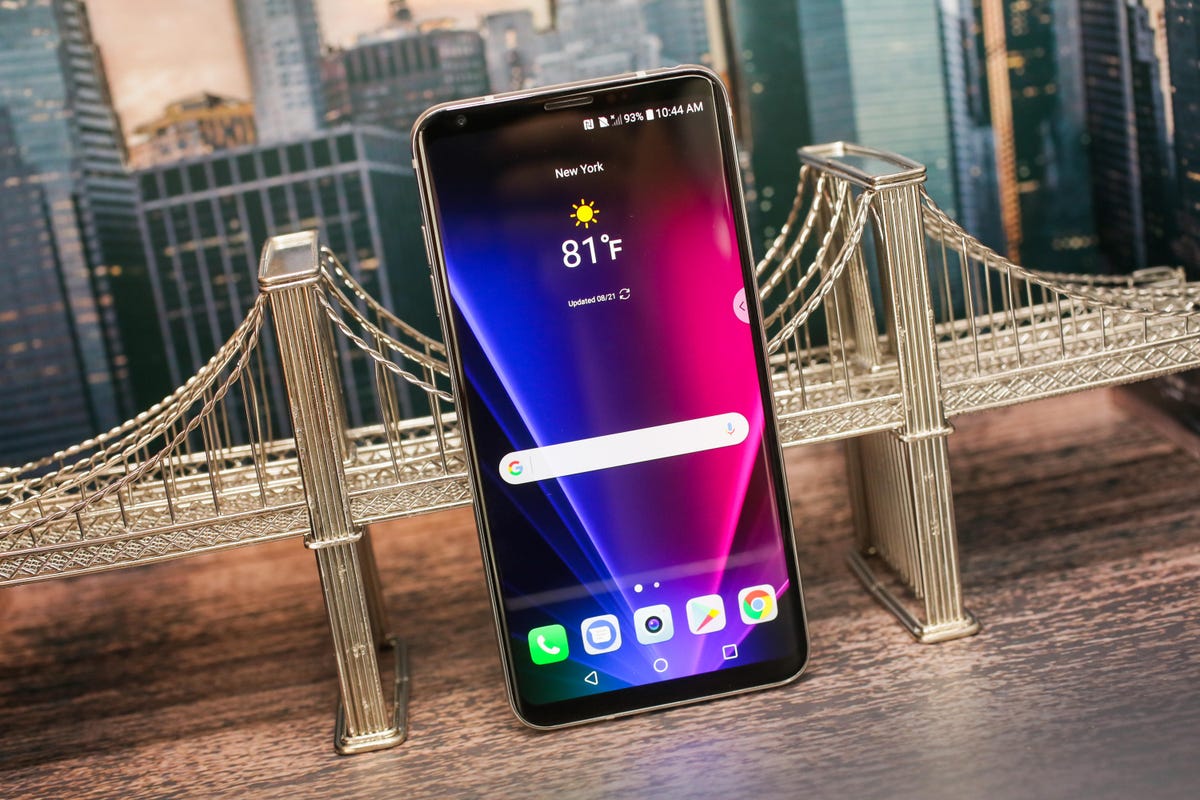
The V30 will be available in South Korea on Sept. 21. North America, Asia, Europe, Africa and the Middle East will follow. So far, the US carrier AT&T has confirmed it will carry the V30, but gave no exact date.
The phone is rated IP68 dust- and water-resistant, meaning it can be submerged in up to 4.9 feet (1.5 meters) of water for 30 minutes.
Unfortunately with water resistance, that means the phone does not have a removable battery.
It's powered by a Snapdragon 835 processor and comes in two memory capacities depending on your market: 64GB and 128GB.
On the back is a 16-megapixel standard camera and a 13-megapixel wide-angle lens.
The phone comes in silver, black, blue and violet. Though not all color options are available in all countries.
The V30 is the first LG phone to use an OLED screen instead of an LCD. Its advantages include less battery consumption than LCD, richer colors and deeper blacks.
The phone runs Android Nougat 7.1.2.
With the V30, LG bids adieu to the V series' signature secondary screen that ran on top of the display. In its place is what's known as the Floating Bar.
Tap it, and it'll give you shortcuts much like the secondary screen offered: favorite contacts and apps and music playback.
A closer look at tapping the Floating Bar.
Two shortcuts in the Bar let you turn either a full screenshot, or just a section of the screen, into a memo. There's another tool that turns anything on your screen into a GIF.
Another look at the phone's Floating Bar.
The phone measures 5.96 by 2.96 by 0.29 inches (152 by 75 by 7.3 mm) and weighs 5.57 ounces (158 grams).
Another look at the handset's edge with the SIM and microSD card slot tray.
A full look at the phone's edge.
The pull-down notifications and settings menu.
LG's Always On lock screen, which continually displays the time, date and other info has more customization options. You can display a personal photo or choose a cute vector drawing that comes preloaded (one of which includes pizza).
LG put a big emphasis on video and camera controls for the V30.
The camera has preset filters that you can overlay on your videos while shooting, giving your footage different tints and colors. LG phones had these before, but now they have labels like "thriller," "romantic comedy" and "summer blockbuster."
The full list of camera and video modes and settings.
A few camera filters that are baked into the V30.
Point zoom lets you smoothly zoom in on a subject while recording, anywhere on the screen -- usually, phones will just zoom to the center.
Though it's a simple thing, it's probably my favorite video feature to use, even though the video can make it look like the video shooter is a bit creepy towards the subject.
It also has a natural comedic factor à la "Curb Your Enthusiasm."
Audio recording and playing capabilities were already stellar on the V20, and have been improved on the V30. The phone now records in clearer and more accurate 32-bit sound, compared to the V20's 24-bit and most phones' 16-bit.
On the front is a 5-megapixel camera.
Taking a photo with the selfie cam.
Beneath the cameras is a fingerprint reader, which can be used to unlock the lock screen.
You can also unlock the lock screen using voice recognition.
To do so, just program a phrase or word.
You can also unlock the touchscreen using facial recognition.
Some more looks of the V30...
The phone uses USB Type-C for charging and file transfer.
And don't worry, there's a headphone jack.
LG hasn't released an official price yet, but we anticipate paying a pretty penny for these features -- the V family is typically LG's priciest phone of the year. Pictured from left to right is the Galaxy S8, the V30 and the iPhone 7 Plus.
For more information, read CNET's first-take of the LG V30.

